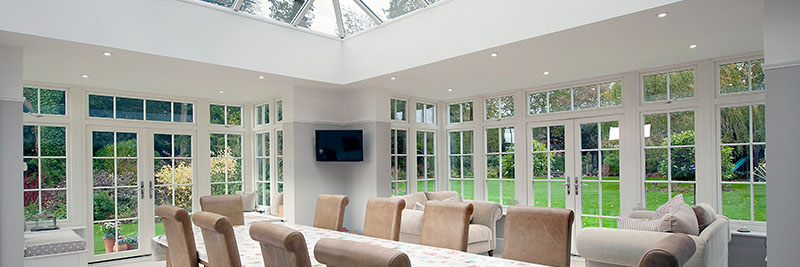Does an Orangery Need Planning Permission?
With the exception of “Load Bearing” and “fiberglass insulation”, planning permission might be two of the scariest words in home improvement. It’s often difficult to know whether your home improvement plans require planning permission and if they do, whether or not your application will be accepted.
In order to help you on your way to your dream home, here’s our little guide so that you can tell relatively easily whether you’ll need planning permission for your orangery.

Permitted Development
You can perform certain kinds of development on your home without any planning permission required. This is what’s known as “permitted development”. Most homes have permitted development rights, however if you happen to live in an area of the following, you will find that you have restricted permitted development rights:
- Conservation Areas
- National Parks
- An Area of Outstanding Natural Beauty
- World Heritage Sites
If you live in one of these areas, you will need to check with your local council for your development rights.
An orangery is what’s considered a “permitted development”, providing it falls within the following criteria.
No more than half the area of the land surrounding the original building would be covered by additions or other buildings. Whether your orangery is classed as permitted development depends on whether it covers more than 50% of the land surrounding the original building. This includes any previous additions to the original building also. Our orangeries vary in size and can be designed specifically to ensure that they fall within this requirement for permitted development. Naturally, this varies from property to property.
No extension forward of the principal elevation or side elevation fronting a highway. As you look at your property from the road, any orangery on the front of your building or sticking out from either side will require planning permission. However, a “highway” includes public right of way footpaths. Should you have a public access foot path down the side of your property an orangery at the rear will require planning permission – since the rear of the property from the road would be the side of the property from the path.
No extension to be higher than the highest part of the roof.
Maximum height of a single-storey rear extension of four metres.
Maximum eaves height of an extension within two metres of the boundary of three metres.
Roof pitch of extensions higher than one storey to match existing house. Since most of our orangeries are single story, they rarely encroach on maximum height limits or multiple story restrictions. However, should the orangery come within 2 meters of your property’s boundary, you will become restricted in your permitted development rights.
At Rococo, we’re with you every step of the way. You need to worry about whether you need planning permission about as much as you need to worry about whether you need to dig deeper foundations or purchase more concrete – Not at all.
Click here to see how building an orangery with Rococo compares to doing it yourself.



